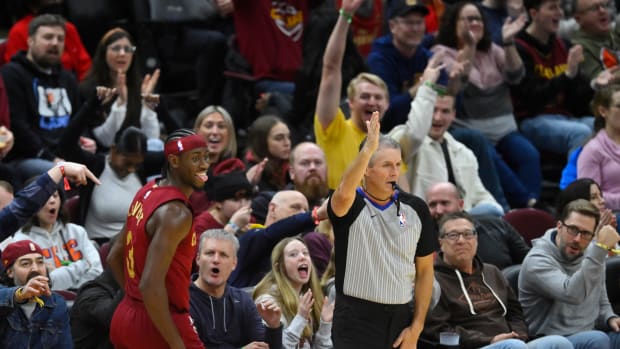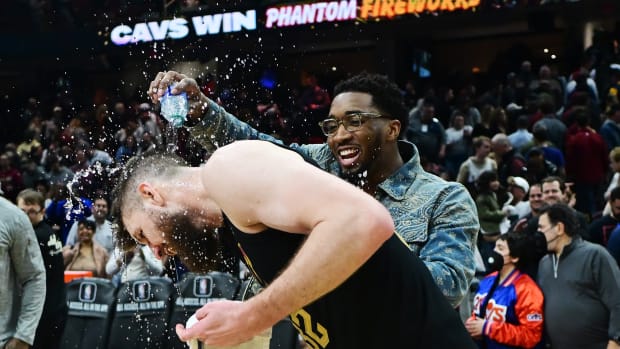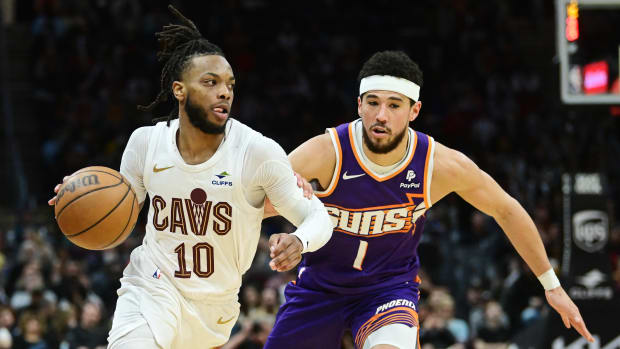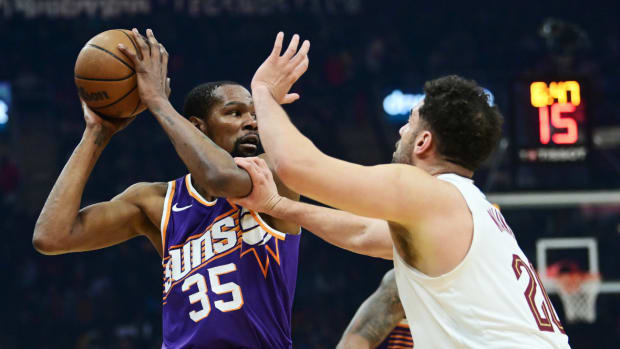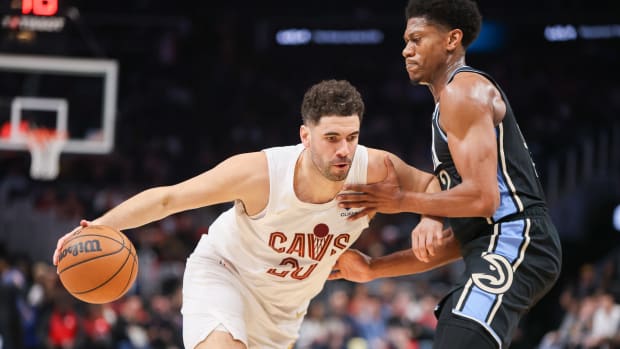The one time ex-Cavs coach Wilkens decided to double Jordan ... well, it failed
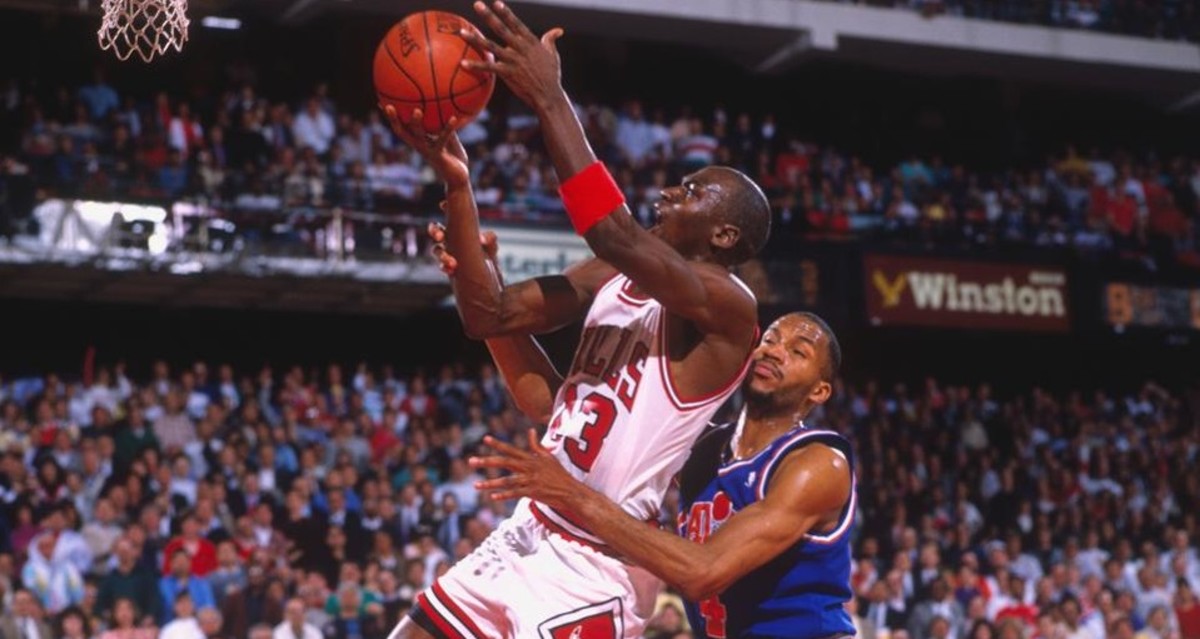
ESPN's "The Last Dance" is bringing the Michael Jordan-era Chicago Bulls to a younger, perhaps-less-aware group of masses, and many will get some impressions.
Including, a false one.
By now, everyone knows Jordan famously hit "The Shot" over Craig Ehlo at the buzzer of a decisive Game 5 between the Bulls and the Cleveland Cavaliers at the Richfield Coliseum, 101-100, on May 7, 1989.
Video of the play shows Jordan eluding the double-team efforts of first Larry Nance, then catching the inbounds pass from Brad Sellers, taking two hard dribbles to his left and rising ... then hanging in the air, as the 6-foot-7 Ehlo flies by.
Of course, The Shot bangs through the rim as 20,273 Cleveland fans were left standing, silently stunned.
It wasn't the fact Jordan hit The Shot that came as a surprise.
It wasn't the fact he beat a double-team to do so, either.
Change of direction
The biggest surprise of the game -- of the series, in fact -- was Cavaliers coach Lenny Wilkens choosing to double-team Jordan on the play.
For Cleveland was the only team which opted to not double-team the game's best player. Jordan was not used to being single-covered. In Sam Smith's acclaimed The Jordan Rules, Jordan was asked which players give him trouble defensively.
"No one really," Jordan told Smith. "Everybody uses two to three players to guard me."
But not the Cavaliers
Since Wilkens, a Pro Basketball Hall of Fame player and coach, had become head coach of the Cavaliers in 1986, he remained steadfast in his decision to not run two guys at Jordan.
"During the timeout, I had to decide how we should defend Jordan," Wilkens told Terry Pluto in their 2000 book, Unguarded. "You didn't need to be Red Auerbach to know the ball was supposed to end up in his hands."
Wilkens elaborated.
"I had a choice," he said. "Defend Brad Sellers as he passed the ball in bounds and guard Michael with one man; or put two men on Michael and let Sellers have an open look as he passed the ball in bounds."
Wilkens was a stubborn, proud man. As Smith of the Chicago Tribune opined, the same pride and stubbornness that got Wilkens out of Brooklyn in the 1950s to a life in basketball led him to believe he would and could defend anyone.
Up until that play, with three seconds left and his Cavaliers up by a point, Wilkens eschewed double-teaming Jordan, for which he was criticized locally and nationally.
But as Smith pointed out, it was what Wilkens knew, and despite not being known as a tough, physical team, the 1988-89 Cavaliers, who had four players average more than 17.5 points per game, were second in the NBA in defensive rating that season.
Stat attack
A look at Jordan's numbers against the Cavaliers in the first two seasons he squared off against them that led to matchups in the postseason are interesting (Chicago had defeated Cleveland in a first-round, five-game series the previous season, winning Game 5 at Chicago Stadium).
In the 1987-88 regular season, Jordan averaged 38.2 points, 4.3 rebounds, 6.2 assists, 2.7 steals and 1.7 blocked shoots, shooting an unfathomable 65.0 percent from the field (91 of 140), and 85.5 percent (47-55) from the free-throw line as the two teams split six games. Jordan did not attempt a 3-point shot in those games.
In the playoffs, however, Jordan upped his game, averaging a staggering 45.2 points, 5.4 boards, 4.8 dimes, 2.8 steals and 1.6 blocks, shooting 55.9 percent from the floor (85 of 152) and 91.8 percent from the charity stripe. Like the regular season, Jordan did not attempt a shot from deep.
In the season of The Shot (1988-89), Jordan averaged 31.2 points, 7.8 rebounds, 6.5 assists, 2.3 blocks and 0.5 blocks, shooting 54.4 percent from the field (75 of 138),37.5 percent (3 of 8) from the 3-point line and 91.9 percent (34 of 37) from the line in 37.7 minutes as Cleveland won all six games en route to 57 wins.
In the postseason, Jordan went off for 39.8 points, 5.8 boards, 8.2 assists, 3.0 steals and 0.4 blocks, shooting 51.8 percent (71 of 137), 40.0 percent (2 of 5) from deep and 82.1 percent (55 of 67) from the line.
Wilkens' philosophy boiled down to Jordan was going to get his points, so try to limit his teammates.
For the most part, it worked. In the 21 total games in those first two seasons that led to playoff matchups against Chicago, Cleveland went 13-8.
However, in the playoffs, the Bulls went 6-4, winning both decisive Game 5s, the second of which on The Shot.
How to play it
Back to Wilkens' choice before the final three seconds -- continue to play Jordan one-on-one or attempt to go outside the box (for the Cavaliers, anyway) and double-team him.
"I picked the second," Wilkens said in Unguarded. "Because I didn't want Michael to end up with the ball."
Here are the game's final couple of minutes, including seeing Bulls owner Jerry Reinsdorf and general manager Jerry Krause in the stands just before The Shot, shot from a baseline angle by a Chicago television station:
Wilkens did a deep dive into the tape and described how Jordan eluded the double-team efforts of Nance and Ehlo, caught the pass from Sellers and then applied the dagger from just in front of the circle.
"This is one of the few times in my career where I've watched the video of a play over and over and over," Wilkens told Pluto in Unguarded. "I assigned Ehlo and Nance to stay with Michael. As the ball was handed to Sellers, Michael took a step as if he were going to set a pick to free (Scottie) Pippen.
"For a split second, Ehlo hesitated as if to follow Pippen, who was cutting across the floor. Then, Michael slipped past Ehlo, shook Nance, caught the pass, drove to the top of the key -- and swished a jumper as the horn sounded."
The frenzied crowd, described by Jordan as the loudest, most-hostile crowd he faced, went silent. Jordan said Cleveland was one of only two NBA cities where he was booed every time he touched the basketball, the other being Detroit.
"I've never heard 20,273 people so painfully silent," Wilkens said. "It was one of those times when you could hear a heartbreak.
"We were all just stunned, staring in disbelief as Michael and his teammates celebrated on our court."
Shouldering the blame
For his part, the humble-to-a-fault Nance took responsibility for what went down the final three seconds 31 years ago.
"(This is the) first time, I gotta tell Coach I apologize, because Coach trusted me to do anything defensively," Nance told cavs.com during a roundtable discussion featuring him, Wilkens, Ehlo, Brad Daugherty and Mark Price. "He put me to face Michael to deny him getting the ball. (Jordan) faked me to the halfcourt line and I took the bait and then he ended up getting the ball."
Nance then pointed toward Ehlo -- whose driving, contested layup off a beautifully designed give-and-go side out-of-bounds play with Nance put the Cavaliers up, 100-99 -- almost apologetically. Ehlo played the best game of his career that Sunday afternoon, pouring in 24 points, including 15 in the fourth quarter, doing so on a sore ankle.
"And then what everybody seen was ol' No. 3," Nance said of Ehlo. "(He) stepped up because he ain't ever gonna run from anybody and they see (Jordan) making the shot on him."
Nance continued to fall on his Cavaliers sword.
"The breakdown came when I took the bait when he faked me to halfcourt," he said of Jordan. "If I could have just let him go to get the ball there, we probably would've been fine.
"But, that's not what happened and he then made a big, big shot. (Point to Ehlo) This guy took the blame for it every year, but he's never said anything to me about it."
Once a coach, always a coach...
Wilkens relieved Nance of blame for not being able to deny Jordan the basketball.
"Yeah, you step toward halfcourt, but it happens because you're reacting to situations," Wilkens said. "You think back about it and you think, 'Yeah, I should've let him go because he's going away from the basket.'
"But he made a great shot."
Colton Jones is a regulator contributor to AmicoHoops.net and SI.com.

